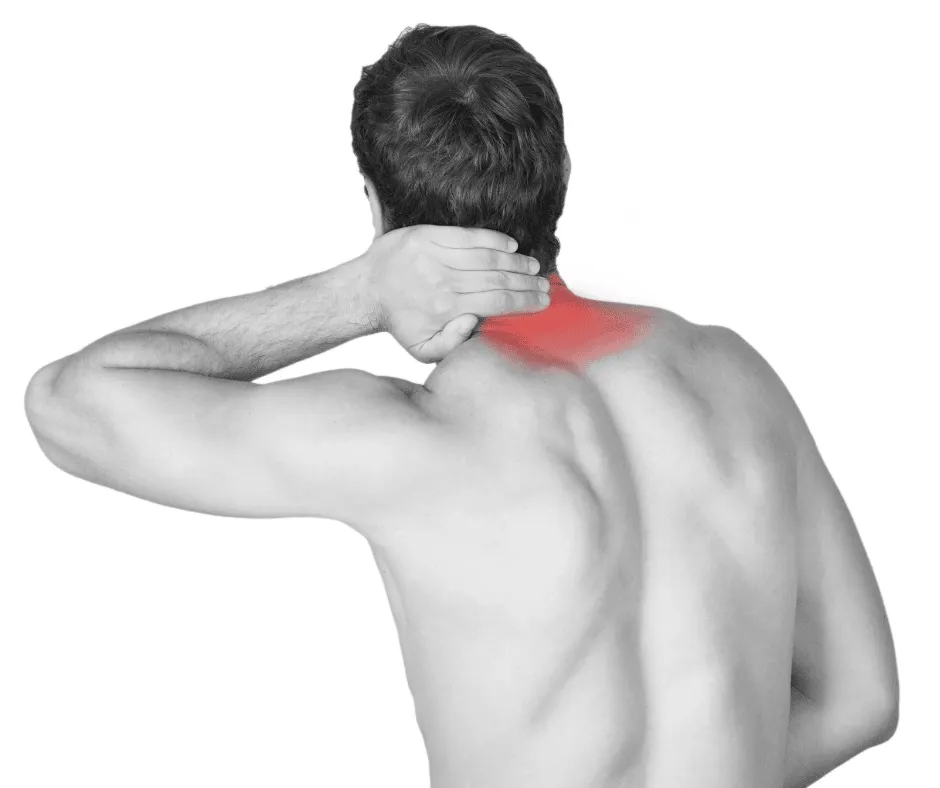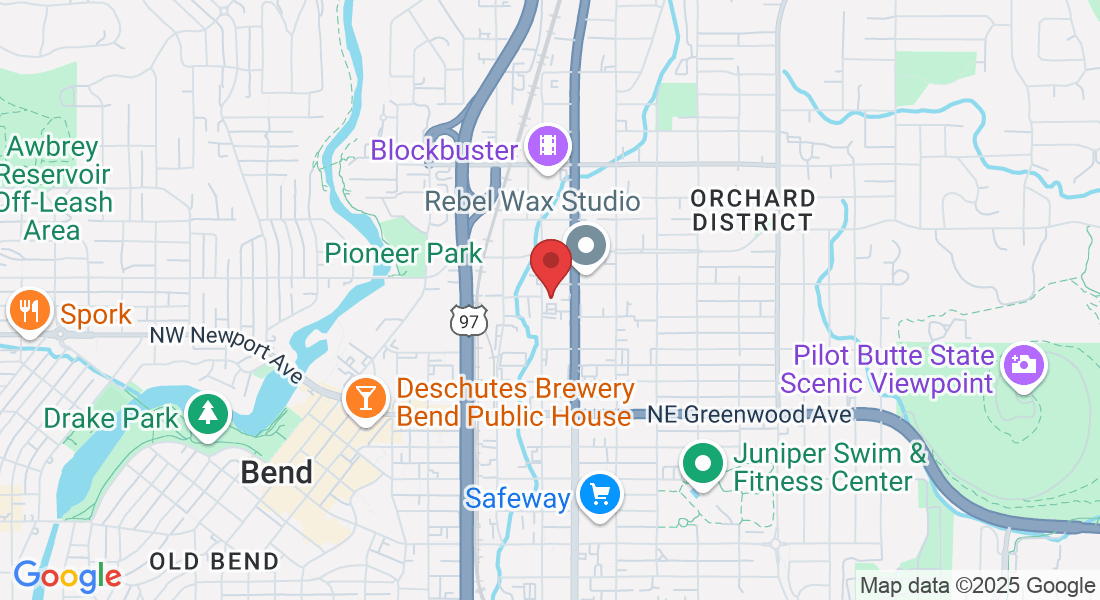Neck Pain Relief
Living Life Shouldn't Be Such a Pain in the Neck
Are you one among the millions experiencing "neck pain" and seeking relief? Neck pain is an everyday battle for roughly 10-20% of U.S. adults, leading to work absences, diminished life quality, and restricted physical activities. Consider us your guide, providing essential knowledge about neck pain and illustrating how we can assist you in restoring your well-being.
At PhysioFit, we are committed to delivering well-rounded neck pain treatments, expertly designed to align with every patient's specific condition and requirements. Our practice is rooted in a science-based, exercise-centric methodology of physical therapy, centered around individualized care plans for pain relief. Our vision transcends the mere alleviation of your neck discomfort; we strive to enhance your holistic health, diminish the chance of chronic or recurrent pain, and expedite your return to your routine activities.
What You Should Know
The most frequent injury resulting from car accidents is neck pain, accounting for nearly half, or 49%, of all vehicular injury cases.
Persistent neck pain may cause an array of complications, including depression, tension in relationships, anxiety, issues at work, hindrance in day-to-day tasks, and excessive tiredness.
Neck discomfort ranks third as a source of chronic pain.
A proper diagnosis of a neck problem involves a thorough evaluation from a professional.

The Most Common Causes of Neck Pain
Neck pain, a common complaint that can arise from various sources, often disturbs the delicate balance of daily life. Whether it's the natural aging process, physical strain, mental stress, traumatic injury, abnormal growths, or an underlying health condition, the origin of neck pain can be multifaceted. Understanding these potential causes is a crucial step towards effective treatment and relief.
Neck discomfort can be attributed to several factors:
Age-related Deterioration: Aging can lead to natural wear and tear of the cervical spine, leading to degenerative conditions like osteoarthritis or spinal stenosis, which can provoke neck pain. Persistent stress and repeated movements can weaken spinal disks, potentially causing a herniated disk or a pinched nerve.
Physical Exertion: Repetitive or strenuous activities can overstrain neck muscles, resulting in stiffness and pain. Factors like poor posture, weak abdominal muscles, and excess body weight can misalign the spine, contributing to neck discomfort. Long hours spent in front of a computer, straining the neck, is a common contributor to neck pain.
Psychological Stress: Stress-induced muscle tightening can lead to neck stiffness and pain. Many individuals may unconsciously tense their neck muscles during periods of stress or agitation, only realizing it when the neck begins to hurt.
Injury: Trauma can damage muscles, ligaments, disks, vertebral joints, and nerve roots in the spinal cord, causing neck pain. Whiplash, a common neck injury resulting from car accidents, often leads to neck discomfort.
Abnormal Growths: Tumors, cysts, and bone spurs can exert pressure on neck nerves, inducing pain.
Underlying Health Conditions: Certain health conditions, including meningitis, rheumatoid arthritis, and cancer, may present neck pain as a symptom.
If any of this information resonates with your current situation, we urge you to schedule an appointment with us immediately. Don't let hip pain diminish your life quality - allow us to help you embark on the path to relief today.
Strategies for Negating Neck Pain
Strategies can be implemented to mitigate neck discomfort related to muscle strain or tension. They are as follows:
Adopt Healthy Posture Habits: Arrange your devices such as computers and phones to prevent neck strain or slouching while using them. Ensure your shoulders are aligned, your back is straight while seated, and your neck isn't strained. Fine-tune your car seats for proper posture during transit.
Optimize Your Sleeping Position: Retain good posture even during sleep. Use a pillow for head support to align your head and neck with your body if you sleep on your side or back. For back sleepers, consider placing a pillow under your knees to lessen lower back pressure. Avoid stomach sleeping with a turned head.
Stay Mobile: Utilize exercises meant for neck pain relief to also prevent it. If your job requires prolonged sitting, incorporate occasional breaks for stretching and mobilizing, including neck muscles.
Avoid Shoulder-Borne Heavy Loads: Refrain from carrying substantial weights like book bags or suitcases on your shoulder. Opt for wheeled luggage or bags instead.
Strengthen Your Upper Back Extensor Muscles: Age-related weakening of the upper back is normal, causing the shoulders to stoop and the head to tilt forward. This posture puts extra strain on your neck and upper back.

Common Symptoms of Neck Pain
Experiencing headaches
Sensation of numbness or a tingling feeling, akin to 'pins and needles', in your shoulders or arms.
Inability to rotate the neck or incline the head
Rigidity in the neck, shoulder, and upper back regions
A radiating pain extending from the neck down to the shoulders or arms
An intense sensation of stabbing or burning
A continuous, nagging discomfort
Remember, if you resonate with any of the symptoms or conditions mentioned, we highly recommend making an appointment with us for a thorough evaluation and personalized treatment plan.
Please Note: The information provided on our website is intended for general education and is not a substitute for professional medical advice. Each individual's situation and body is different. Therefore, what may work for one person may not work for another. We care about your well-being and advise you to reach out to us to discuss your specific needs before implementing any advice from our website.
Your Source for All Things Physical Therapy in Bend Oregon
The PhysioBlog

Avoid the "Always In Season" Training Mistake | PhysioFIT Bend Oregon
Whether you’re chasing PRs, hiking Pilot Butte every weekend, or grinding it out at the gym between work and family, here’s a hard truth most active adults in Bend, Oregon don’t want to hear:
You might be training like you’re always in season… and that’s a problem.
At PhysioFIT at The Performance Collective, we work with athletes of all kinds—from mountain bikers and CrossFitters to weekend warriors and backcountry skiers. And one of the most common mistakes we see? People treating their bodies like they're always on. Always pushing. Never pausing. Never rebuilding.
The Athlete's Secret: Training in Phases
Professional athletes don’t train the same way year-round. Their entire performance strategy is built around periodization—structured phases of stress, recovery, adaptation, and peak performance. That cycle revolves around two core phases:
1. In-Season Phase: Maintain + Compete
This is where most of us think we should live. The “go-time” mode. The sexy part. The performance stage.
But in-season training is not about growth—it’s about preservation. It’s about doing just enough to maintain your edge, avoid injury, and stay sharp during competition or peak activity windows.
Here’s what smart in-season training looks like:
Prioritizing recovery over volume
Avoiding spikes in load or intensity
Monitoring for fatigue and overuse warning signs
Maintaining mobility and joint health through prehab routines
Staying consistent but conservative with strength training
Think of it as treading water at a high level—not sinking, not surging.
2. Off-Season Phase: Rebuild + Reset
Now here’s where the magic happens—and it’s where most active adults fall short.
The off-season is not about getting soft. It’s about getting smart.
You’re not backing off because you’re weak. You’re backing off to build back stronger. This is your chance to:
✅ Heal micro-tears in muscle and connective tissue
✅ Address mobility restrictions and movement inefficiencies
✅ Rebalance strength across joints and muscle groups
✅ Develop better mechanics and foundational endurance
✅ Focus on the little things that make a big difference when you’re back in go-mode
Skipping this phase is like skipping leg day for your whole body. Eventually, the imbalance will catch up with you—usually in the form of nagging pain, poor performance, or injury.
Why Always Being “In-Season” Wears You Down
Here’s what we see at PhysioFIT all the time:
🚫 Low-grade fatigue that just won’t go away
🚫 Flat workouts even with plenty of sleep and nutrition
🚫 Nagging tendon pain in the knees, shoulders, or elbows
🚫 Back tightness or joint pain that creeps up after every session
🚫 A growing pile of PT sessions, chiro visits, and massage appointments that treat symptoms but not the root cause
The root cause? You never gave your body time to adapt.
Active Adults Need Off-Seasons More Than Pros
Here’s the kicker: If you’re not a professional athlete, you might need an off-season even more.
Why? Because you’re juggling stressors athletes don’t have to deal with:
Long work hours
Parenting
Poor sleep
Travel
Deadlines
Mental fatigue
All of these increase your overall load—even before you step into the gym. That’s why many of our Bend clients at PhysioFIT perform better once they adopt a smarter, season-based approach to their training.
How to Build Your Own Training Seasons (Without a Coach)
Even if you’re not prepping for the Olympics, you can use the same principles:
✅ Step 1: Pick Your “Competition Season”
Choose 1–2 times per year where you’ll push hard—races, ski trips, backpacking adventures, etc.
✅ Step 2: Plan a Structured Off-Season
2–3 months of reduced load, increased mobility work, and strength training to fix weak links.
✅ Step 3: Layer in a Pre-Season Phase
4–8 weeks before go-time, ramp up intensity and sport-specific training.
✅ Step 4: Check in with a Physio
Get assessed. Address compensations. Test your strength and mobility objectively. (We use force plates, dynamometers, and advanced movement screens at PhysioFIT.)
Conclusion
You can’t just keep hammering and expect to level up.
Recovery is the gateway to performance.
By learning to respect both the in-season and off-season phases, you’ll unlock:
✅ More gains
✅ Fewer injuries
✅ Better energy
✅ Longer athletic longevity
✅ More fun doing what you love
And that’s what we’re all about at PhysioFIT.
Ready to Reset?
If you’re stuck in permanent “go” mode and your body’s giving you warning signs, it’s time for a smarter approach. At PhysioFIT at The Performance Collective in Bend, Oregon, we help active adults and recreational athletes build personalized performance plans that respect the cycle—and get results.
Schedule a recovery & performance assessment with one of our sports therapy specialists today.
Sources:
Copyright PhysioFIT 2025 . All rights reserved


